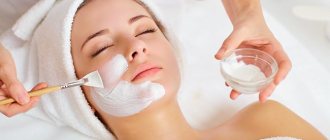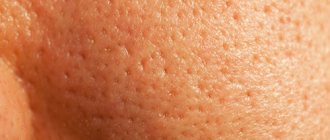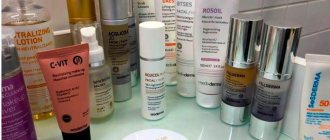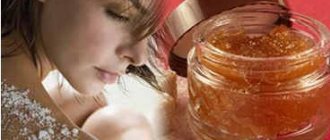Dry hand skin is a common problem characterized by a decrease in moisture in the outer layer of the skin - the epidermis. According to statistics, every fifth person worldwide suffers from dry skin1.
Very dry skin of the fingers and hands is an alarming sign of a violation of the barrier properties of the epidermis, which can be temporary or long-term. People with this condition have a feeling of tightness, the skin is easily irritated, becomes sensitive to external influences, becomes flabby, and less elastic. If you do not take any action, a whole range of unpleasant symptoms will appear in the future, such as:
- change in surface relief;
- the appearance of small wrinkles and microcracks;
- peeling;
- signs of an inflammatory process.
Hydrolipid film is a natural barrier consisting of exfoliated horny scales, sebum, sweat, microflora and organic acids. In case of severe imbalance of the components of the water-fat film, a pathological condition of the skin develops - xerosis. The skin of the hands begins to peel off, and many small grayish-white scales appear on it. It becomes dull and rough. Sometimes there are areas of redness, superficial or deep cracks. These changes are accompanied by a feeling of tightness, itching, tingling, pain (especially when in contact with external factors2.
When the permeability of the skin barrier is impaired, the surface of the hands becomes vulnerable to infectious (bacterial, viral, fungal) and chemical agents. When the skin is frequently damaged, the cells of its upper layer (epidermis) produce cytokines - substances that initiate and maintain inflammation. Therefore, the characteristics of dry skin are sensitivity to irritation, susceptibility to allergies and infections3.
Causes of dry hand skin: internal and external
To effectively deal with a problem, you need to determine exactly what caused it. The reasons why the skin of your hands may dry out are divided into external and internal. In the first case, dryness is caused by the direct influence of harmful environmental factors, such as:
- Improper skin care. Frequent use of hot water, aggressive hygiene products - soap, gels, many of which contain surfactants that destroy the hydrolipid film, as well as disinfectants due to the COVID-19 pandemic.
- Exposure to unfavorable climatic factors, such as high and low temperatures, dry air, wind, ultraviolet radiation, prolonged stay in an air-conditioned room.
- Contact with professional and household chemicals.
In addition, the skin of the hands can dry, peel and crack due to regular aggressive cosmetic procedures such as peeling, laser resurfacing, diamond microdermabrasion, etc.1.
Internal causes of dry hands include:
- chronic dermatoses: psoriasis, eczema, atopic dermatitis, some forms of mycoses (fungal skin infections), ichthyosis, keratoderma, etc.4;
- malignant oncological diseases, radiation and chemotherapy;
- endocrine pathologies: diabetes mellitus, thyroiditis (inflammation of the thyroid gland);
- renal failure;
- vitamin deficiency;
- mental disorders, for example, the psychogenic form of anorexia.
Sometimes dry hand skin occurs when following strict diets, lack of vitamins and impaired absorption of nutrients3. Also, one of the reasons may be the use of certain medications, such as:
- alcohol-containing solutions;
- talkers;
- preparations for phototherapy;
- local and systemic corticosteroids;
- topical and systemic retinoids for the treatment of acne.
Methods of therapy
The doctor will determine exactly how to treat the problem in order to completely eliminate unpleasant manifestations. For diagnosis and treatment, you need to contact a dermatologist, as well as your specialist who deals with chronic disease.
The treatment uses only complex therapy, which, through joint efforts, including medications, traditional medicine and healthy nutrition, helps eliminate the problem. Along with the use of these treatment methods, it is necessary to limit work with chemical mixtures and more often pamper your hands with moisturizing cosmetics.
An important role in eliminating troubles is played by the intake of vitamins and microelements into the body. Therefore, the menu should be correct and balanced, rich in foods rich in calcium, vitamin E, A.
What to do if you have dry hands
If the problem is caused by internal causes, you need to focus on treating the underlying disease. However, there are general recommendations that help normalize metabolic processes in the dermis and help eliminate dry skin on the hands:
- keeping hydrated (drinking enough fluids);
- healthy, balanced diet, rich in unsaturated fatty acids (avocado, vegetable oils, fatty fish, nuts, etc.);
- smoking cessation and moderate alcohol consumption;
- adequate physical activity;
- reducing time spent in the sun;
- use of mild cleansers and care products for dry skin.
How to eat healthy
The most important reason why the epidermis dries and cracks is a lack of vitamins, which results in the development of vitamin deficiency. If the body lacks fat-soluble vitamins E or A, the condition quickly worsens. What you need to eat so that these vitamins are not deficient:
- Vegetable products: tomatoes, carrots and sweet peppers, beans.
- Meat products: liver, beef and veal.
- Dairy products: fermented milk products (kefir, fermented baked milk), cottage cheese.
- Oils: any vegetable.
Nuts of any kind saturate the body well with the necessary vitamins. Saturating the body with the required amount of necessary elements will help the rapid restoration of the dermis.
To achieve a good effect, you need to give up foods: alcohol, spices, fatty meats, baked goods, sweets, sausages and canned foods.
Hand hygiene
How to treat and how to prevent changes in the skin of the hands depends to a certain extent on hygiene. The following manipulations should be performed regularly to keep the skin in order:
- It is required to come into contact with water and chemical compounds as little as possible. Stop wearing nail polish. Always wear silicone gloves when washing dishes or cleaning the house.
- Every evening, apply a rich cream with glycerin to your brushes. To enhance the effect, you can then put on cotton gloves.
- To wash your hands, use soft, less aggressive soaps, such as “baby” and “bath” soaps.
- You need to take herbal baths often. When the procedure is over, you should lubricate your hands with a rich cream, for example, “Children’s”.
- In severe cases, when the dermis is thoroughly cracked and the wounds do not heal well, you can use special medical glue. It is necessary to lubricate the cracks with this substance - this will help the wounds heal. The product is sold in pharmacies and is called “Super-Glu”.
When there is nothing serious with your health, these procedures should help and completely heal dry skin. If this does not help, you need to resort to drug therapy.
Drug treatment
Cracks with blood oozing do not appear immediately. First, the epidermis dries out, then begins to peel off. Then microcracks appear in this place, they gradually deepen, begin to itch and bleed. If a bacterial infection gets into the wound, the crack site becomes inflamed and fester occurs.
Cracks appear on the fingertips, the skin becomes rough and raised, which is why the rupture occurs with pain. The epidermis in the interdigital area is very delicate; if you work without protection with chlorinated water and chemical components, then a burning sensation begins in these places, and then rupture. Deep and large breaks occur around the nails. They prevent a person from living and working normally. Therefore, it is important to start treating this problem in a timely manner.
Drug therapy consists of topical application of ointments and creams, and taking medications in the form of capsules and tablets. It is imperative to carry out comprehensive treatment, since ointments alone cannot cure the problem.
Hand treatment should be carried out more than once a day. The most effective drugs for improving skin condition are:
- Depanthenol and Bepanten. These are ointments with active elements such as vitamin B and chlorhexidine. Vitamins increase the healing of cracks, and chlorhexidine kills pathogenic microflora well. It is necessary to treat wounds three times a day, making a thin layer on the skin.
- Radevit. An ointment containing vitamins A, E, D. The composition makes the skin softer, tightens wounds and relieves inflammation. Strengthens the protective properties of the epidermis and regulates the processes of cell keratinization. It is recommended to apply the ointment in the morning and evening.
- Pantoderm. The ointment accelerates metabolic processes and restores dermal cells. It has a beneficial effect on the regeneration process of the skin of the hands. It is acceptable to lubricate problem areas more than once a day.
- Eplan. The ointment has excellent protective functions, forming a thin and invisible film on the surface and does not allow pathogenic microorganisms to enter the wounds. Relieves itching, which bothers you when wounds heal, and accelerates their healing. Handles should be treated twice a day: in the morning and after lunch.
- Aevit. Doctors prescribe capsules if there is a lack of vitamins A and E. The drug should be taken one capsule per day. The duration of treatment is from 20 to 40 days.
- Apilak. Ointment with propolis. Quickly tightens wounds and cures dry skin.
- The power of the forest. Cream containing Floralizin. Made from natural raw materials and rich in vitamins A, D, E, natural active ingredients with fatty acids, antioxidants and amino acids. It saturates the epidermis well with moisture and helps quickly heal cracks.
- Boro-Plus is purple. This is an ointment made from decoctions of several medicinal herbs. Apply to the affected areas twice a day until the cracks disappear.
- Hydrogen peroxide. Before applying medicinal ointments, it is necessary to treat the affected areas with this solution, applying it to a cotton swab and blotting the cracked surface.
- Levomekol. The ointment is used to eliminate pathogenic bacteria from the surface of the affected dermis. Treat sore hands twice a day.
- Prednisolone. This is a hormonal ointment, used if other remedies have not helped. The cracked dermis should be lubricated three times a day, but no more than 5 days in a row.
- Exoderil. The ointment is used for fungal infections. Penetrates deeply into the epidermis; it should be applied specifically to the affected areas twice a day until complete recovery.
All medications must be prescribed by the attending physician. Any medicine has side effects, so you should not risk your health, but rather follow all the doctor’s recommendations.
Treatment with traditional medicine
If the skin on your fingers dries out and cracks appear, traditional medicine recipes can be a good way to cure the problem. The use of hand baths and masks is suggested here. It must be said that they are effective against damage to the epidermis due to exposure to external factors. But they can be used in combination with drug therapy to relieve unpleasant symptoms. The most popular folk remedies are the following procedures:
- Melt some natural beeswax in a water bath. Dip the tips of the affected fingers into hot wax so that you can endure it. Let the wax harden and put cotton gloves on your hands. You should keep your brushes in gloves for at least 12 hours, so it is better to do this procedure at night. Use the recipe every day until complete recovery.
- Baths made of milk and glycerin. Mix the liquids and heat them in a warm mixture, hold your hands for 10-15 minutes and do them several times a day.
- Make a decoction from a collection of herbs: coltsfoot, flowers and leaves of linden, meadowsweet and plantain, mixing them in equal quantities. Before you put your hands in the broth, you need to pour a little olive oil into it.
- Potato mask. Grate raw potatoes on a fine grater to make a paste, pour a spoonful of honey into it. Mix everything and coat your cracked fingers. Then put on rubber gloves on your hands and cotton gloves on top. It is recommended to keep the brushes in the mask for 10-60 minutes, depending on the severity of the condition. It is better to wash off the mask with a warm herbal decoction.
- Egg mask. Mix the yolk with a spoon of honey and vegetable oil. The mask should not be too thick. Treat the skin and hold as described in the previous paragraph.
- Honey. Mix 3 tablespoons of honey with a teaspoon of olive or sea buckthorn oil, apply the mask to the affected areas.
- Salt bath. Dissolve 3 tablespoons of iodized salt in 250 ml of warm water and drop tea tree oil into it. Keep the brushes in it for 15-20 minutes, then rinse with warm water, wipe dry and lubricate the surfaces to be treated with a softening cream.
- Herbal bath. Take 2 spoons of plantain, calendula and chamomile herbs, brew the mixture with a liter of boiling water. Let the infusion cool and place your hands in the warm broth for 20 minutes. After all, treat the skin with a moisturizer.
Treatment with baths and masks should begin as soon as flaky skin is detected. If deep cracks appear, then drug treatment prescribed by the doctor will help.
Frequently asked questions about the disease
I have arthritis in my hand since childhood. Will they take me into the army?
If the function of the joint is impaired, then no.
I had arthritis in my wrist after gonorrhea. Can it be completely cured?
Infectious arthritis can be completely cured if the correct treatment is prescribed in time.
What is the best way to smear your brushes so that they don’t hurt?
You need to consult your doctor. The best painkillers are Voltaren emulgel and Menovazin rubbing solution.
Arthritis of the hand joints is best treated in the early stages. But if you were unable to seek medical help in time, then do not be discouraged: everything can be treated.
At the Moscow Paramita clinic, arthritis of the hands is treated at any stage. Our patients forget about pain after the first acupuncture sessions. Further rehabilitation therapy takes place in comfortable conditions and is completely painless. We will restore your health!
Literature:
- Shelepina T.A. Rehabilitation therapy in the complex treatment of JRA. Pediatric rheumatology. !995, 13 – 16.
- Blokhin V.N. Trauma and reconstructive surgery of the hand. Orthopedist, traumatologist and Prosthetics, 1973, 6, 63-38.
- Woog PHNFular Publishers, Basle, 1978.
Themes
Arthritis, Joints, Pain, Treatment without surgery Date of publication: 11/17/2020 Date of update: 04/03/2021
Reader rating
Rating: 4.75 / 5 (4)
Prevention
To prevent the skin on your fingers from drying out and cracking, it is necessary to take preventive measures. To prevent the problem from returning again, it is recommended to use the following tips:
- Do not use cleaning products with aggressive components, such as alkali. Buy soap and gel without this additive.
- After washing your hands, you should dry them with napkins or a towel, and not dry them with hot air. It destroys the natural fatty “lubricant” of the dermis.
- Dirty work must be done with gloves. Use thin latex ones for cleaning the house, and thick cotton ones for repairs and work in the garden.
- Carry out hand care daily, treat your hands with creams in winter and summer: in winter - nourishing, and in summer - protective moisturizing.
- Eat balanced food enriched with essential vitamins and elements. Avoid vitamin deficiency. Drink more water and do not use a mono-diet for weight loss. Include nuts, vegetables and fruits, cottage cheese, beef and vegetable oils in your diet.
- Every six months, take multivitamin complexes for 30 days.
It is also necessary to examine the dermis on the fingers daily and begin treatment procedures on time. If the problem has gone far, then it is better to contact a specialist for help.
Symptoms of hand arthritis
Symptoms of hand arthritis depend on the causes of the disease, its clinical form and the nature of its course. Arthritis can begin suddenly, acutely, with a disturbance in the general condition of the patient, or it can slowly and imperceptibly with gradual destruction of the joints.
First signs
Acute arthritis of the hand begins suddenly with pain, redness and swelling of the tissue. Body temperature may rise, chills, malaise, and headache may appear. This course usually forces you to immediately consult a doctor, so acute arthritis in most cases is completely cured.
The first symptoms of arthritis of the hands are pain, swelling and redness of the tissues.
In the chronic course, vague pain in the hand and wrist area first appears, then morning stiffness of the hands appears - a feeling of tight constricting gloves on the hands, which initially lasts no more than half an hour after sleep. Stiffness goes away after the start of movements. Joint pain is aching in nature; at the beginning of the disease, it appears and then disappears.
It is important to notice the first symptoms in time and immediately seek medical help!
Obvious symptoms
Gradually, the pain syndrome with arthritis of the hands increases, the aching pain becomes constant, swelling and redness appear (not always). The period of stiffness in the morning increases, the movement of the hand is impaired, first due to pain, and after a while due to dysfunction of the joint. When you squeeze the hand, a clicking sound appears, sometimes accompanied by increased pain.
Over time, the hand with arthritis of the hands becomes deformed and loses its functions. It may take on the appearance of flippers (in rheumatoid arthritis) or shorten due to the rapid ossification of growth plates in juvenile chronic arthritis. The small bones of the wrist grow together, ankylosis develops, and the hand stops bending.
Dangerous symptoms
Arthritis of the hands can become more complicated. Therefore, if the following symptoms appear, you should immediately consult a doctor:
- acute onset of the disease with high fever lasting more than 5 days;
- a sudden rise in high temperature against the background of already existing signs of arthritis, increased swelling and redness of the hand - a sign of possible purulent inflammation;
- sharp pain, deformation of the hand and increasing swelling of the tissues are a sign of dislocation or subluxation of the hand.
Diagnostics
The diagnosis of arthritis of small joints of the hands is established on the basis of examination and questioning of the patient and is confirmed by laboratory and instrumental studies:
- Laboratory tests
- reveal the content of components confirming the inflammatory process, the presence of infectious pathogens and antibodies to them, as well as rheumatoid factor. - Instrumental
:- Ultrasound
– reveals the presence of excess fluid in the joint; - radiography
- the presence of bone changes (narrowing of the joint space, bone ankylosis); - MRI
– presence of changes in soft articular and periarticular tissues; - arthroscopy
- endoscopic examination, allows you to see the inner lining of the joint and all changes in it; During diagnostic arthroscopy, you can take fluid or a piece of tissue for examination.











